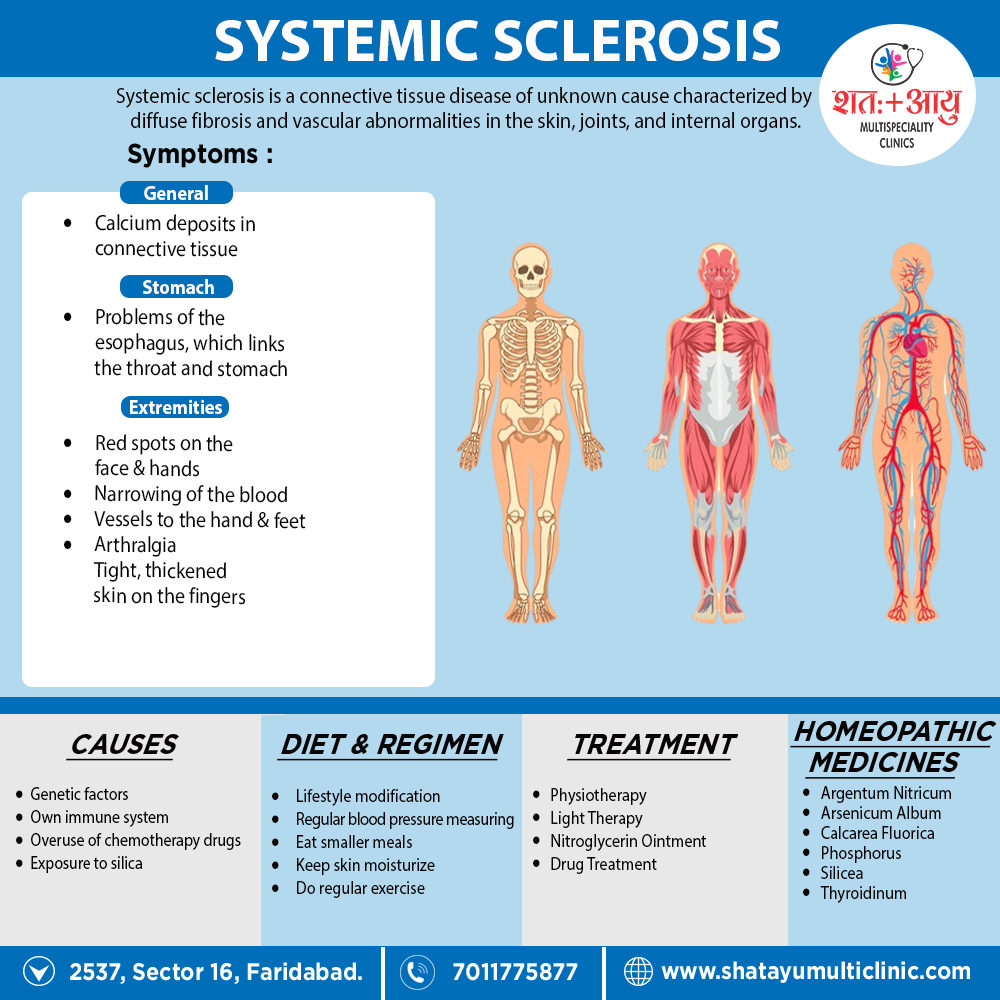Overview of Systemic Sclerosis
- Basically, Scleroderma refers to a range of disorders in which the skin and connective tissues tighten and harden.
- That is a long-term, progressive disease also gradually gets worse.
- It is consider a rheumatic disease and a connective tissue disorder.
- This is also thought to be an autoimmune condition, in which the body’s own immune system attacks the body’s tissues.
- This results in an overproduction of collagen, the protein that forms the basis of connective tissue.
- The result is a thickening, or fibrosis, also scarring of tissue.
- Furthermore, Scleroderma is not contagious.
- And may run in families, but it often occurs in patients without any family history of the disease.
- It is thought to affect between 75,000 and 100,000 people in the United States, mostly women aged from 30 to 50 years. [2]
- Besides this, There is characterise by sclerodactyly in combination with Raynaud’s and digital ischaemia.
- The peak age of onset is in the fourth and fifth decades, and overall prevalence is 10–20 per 100 000, with a 4 : 1 female preponderance.
- All in all, That is subdivide into diffuse cutaneous systemic sclerosis & limited cutaneous systemic sclerosis. [1]
It is sometimes known as CREST syndrome, because the symptoms form the acronym, CREST i.e.:
- C: Calcinosis, or calcium deposits in tissues and under the skin
- R: Raynaud’s disease
- E: Esophageal problems, including GERD
- S: Sclerodactyly, or thick skin on the fingers
- T: Telangiectasias, or enlarged blood vessels, manifesting as red spots [2]

